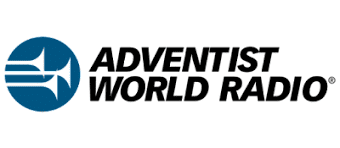Back in the days before World War II, there were two ships in Australasian waters that were quite famous in the international radio scene. One was the “Awatea” that plied across the Tasman Sea between Australia and New Zealand, and we will tell you the story of that ship radio station on another occasion.
The other ship radio station was aboard the MV Kanimbla that plied in Australian waters. Both ships were built in the United Kingdom, both were launched in the year 1936, and both were noted for the broadcast of radio programming, the Kanimbla as VK9MI and the Awatea as ZMBJ.
The notable fact about the passenger liner Kanimbla is that it was the only ship in the entire history of our world in which a radio broadcasting station was constructed into the ship at the time when the ship was built.
The 11,000 ton passenger liner Kanimbla was built at Belfast in Northern Ireland by the famous ship building company, Harland & Wolff. The electronic equipment was manufactured by AWA in Australia and shipped to Ireland for installation while the ship was still under construction.
The Kanimbla was granted by the PMG Department in Australia a radio broadcasting license with the experimental callsign VK9MI and, as we mentioned earlier, it is the only ship in the world to have a radio broadcasting station incorporated into it at the time of construction.
The radio station consisted of two studios: one for group broadcasts, and the other for announcer presentation. The crystal controlled transmitter was rated at 1.5 kw with an output into the antenna system of just 50 watts, and it could operate on any wavelength between 20 and 50 meters. The first test broadcast from 9MI was made on April 21, 1936 during sea trials in the Firth of Clyde.
The new MV Kanimbla began its delivery voyage from Northern Ireland to Australia at 4:00 am on April 26, 1936. It is reported that the radio station 9MI made four test broadcasts each day during this 15,000 mile journey to Australia.
The official inauguration of the new radio broadcasting station VK9MI was made in a special broadcast to Australia while the ship was south of the continent in the Great Australian Bight, 1,000 miles from Sydney. At 8:00 pm Eastern Australian Standard Time, VK9MI went on the air shortwave and the program was picked up and relayed thoughout Australia over the ABC mediumwave network.
This inaugural broadcast from 9MI was made on 11720 kHz, though subsequently the regular channel was 6005 kHz, which was modified in April 1939 to 6055 kHz. The at times irregular schedule from VK9MI was usually half an hour or an hour a few evenings a week. The announcer and manager was Eileen Foley, who also signed the QSL cards.
The Kanimbla plied with passenger traffic backwards and forwards on the southern route between Western Australia and Queensland, and the ports of call in this shuttle service were: Fremantle in Western Australia, Adelaide in South Australia, Melbourne in Victoria, Sydney in New South Wales, and Brisbane and Mackay in Queensland.
The local AWA mediumwave stations on land in each of these areas frequently relayed the shortwave programming from VK9MI to the local audience. Among these stations were 2AY in Albury New South Wales, 3BO in Bendigo Victoria, and 4CA in Cairns, Queensland.
On many occasions, radio station VK9MI was heard on shortwave throughout Australia and New Zealand, and many QSL cards were signed by the famous woman announcer, Eileen Foley. As time went by, the transmitter began to malfunction and it produced a noisy, wide signal in the 49 meter band.
At the outbreak of the European War at the beginning of September 1939, the radio station VK9MI was silenced, along with all other experimental shortwave stations in Australia. The Kanimbla then became a troop carrier, and after the war, it was unceremoniously scrapped.
The unique ship broadcasting station VK9MI was on the air therefore for a period of just three and a half years. All that is left of this radio station these days is found in radio memorabilia, such as entries in old radio magazines, and articles and books on the history of radio broadcasting, and a few isolated QSL cards in old QSL collections.
During the entire period of on-air activity, only one QSL card was printed to verify reception reports. The Pacific Heritage Collection in Dunedin holds a few copies of this exotic QSL card, the CPRV collection in Maryland in the United States holds at least one copy, and there is just one copy of this valuable QSL card in the AWR collection in Indianapolis. Our card was signed personally by the veteran woman announcer, Eileen Foley.
From: Wavescan 384, May 5, 2002
 “Wavescan” is a weekly program for long distance radio hobbyists produced by Dr. Adrian M. Peterson, Coordinator of International Relations for Adventist World Radio. AWR carries the program over many of its stations (including shortwave).
“Wavescan” is a weekly program for long distance radio hobbyists produced by Dr. Adrian M. Peterson, Coordinator of International Relations for Adventist World Radio. AWR carries the program over many of its stations (including shortwave). 